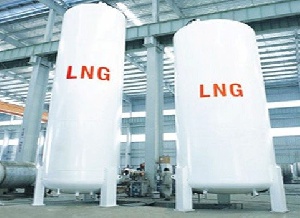It has widely been agreed for some years now that in order to end the misery of Dumsor (power crises), Ghana must install the infrastructure to enable it to import Liquefied Natural Gas (LNG) to fuel its power plants.
LNG will provide fuel security, displacing the extortionately priced LCO imports from Nigeria, and complement the nascent but ultimately insufficient indigenous gas to fully meet our domestic gas production.
In contrast to the previous government’s indecision on LNG, the new government initially appeared to make this a priority – the Minister of Energy, Boakye Agyarko said in his Parliamentary inauguration.
In an apparent prod to the government, ACEP, the widely respected think tank, just issued a very informative advisory paper titled “LNG supply to Ghana: The Politics and the Reality”, in which it analyses and compares the different options on the table.
Three different proposals appear to be under consideration – Quantum Power (QPR), West African Gas Limited (WAGL) - a subsidiary of Nigeria’s Sahara energy, and Blystad Energy Management (BEM).
A fourth proposal seems to have been dropped as it was proposed for the Western Region, where the availability of domestic gas makes it pointless.
Although the three proposals are all for the Tema region, where due to lack of domestic gas the energy shortage is most acute, and now all offer a 10-year term, they have a number of differences.
In terms of location, QPR’s facility siting is five km offshore, while both WAGL and BEM propose for their vessels to sit in the port.
ACEP notes that it is questionable as to whether it is possible to situate such a facility in the Tema Port in particular.
On one hand, a number of technical studies have shown that gas cannot be safely evacuated from the port because it is too heavily built-up, which seems to be confirmed by the denial recently of GE Early Power’s request to construct a similar LPG pipeline from the port.
On the other, significant very costly dredging and breakwater expansion work will be required, which will jeopardize the operations of the Port, which is major revenue basket for the state.
The second important difference between the projects relates to how they will be priced.
Each of the proposals requires a per unit fee to recover the investment cost of the infrastructure ($ 1.3 for QPR, $ 1.5 for WAGL and $ 1.38 for BEM), however, they differ markedly in how they handle the cost of the imported LNG.
BEM and WAGL require that they supply the LNG as well (bundled deal), with prices linked via formula to the price of oil.
At current levels, this translates to $ 8.1 per unit for WAGL and $ 6.1 per unit for BEM but this could climb dramatically if the oil price goes up to the levels from just a few years ago.
In contrast, QPR does not offer LNG supply.By providing the tolling infrastructure, QPR affords Ghana the exclusive right to itself directly procure LNG at the best price, including on Government to Government basis.
ACEP notes that Ghana may, in fact, be able to secure much more advantageous prices than BEM and WAGL’s if it negotiates directly – recent prices identified by the government from a supplier were as low as $ 5.85 per unit.
Furthermore, the indexation of gas price to Brent , as BEM and WAGL are proposing, apparently does not reflect the global trend in the LNG market and it is “not justifiable” for the government to approve a locked-in Brent based LNG price for 10 years as this will deprive Ghana of the flexibility to take advantage of the falling global prices.
In aggregate, for the 10- year contract period, ACEP calculates that with the bundled WAGL and BEM approach, the Government could have to pay as much as $ 8.8 billion and $ 6.8 billion while the fixed obligations to QPR would be only $ 1.2 billion.
Despite these eye-watering numbers for all three projects, the figures are only a trifle in comparison to the cost of meeting those energy needs with LCO instead over the next decade, as the Energy Commission has remarked on numerous occasions.
As to timing, BEM has indicated it is able to start deliveries in a year’s time (Q3 2018), while WAGL targets Q1 2019.
However, ACEP notes that the timing of these in-port solutions looks conservative in light of the extensive dredging and construction work required and virtual total lack of detailed studies confirming design and work required.
QPR, by comparison, have achieved all licenses and permits, completed all necessary studies and are ready to start construction and deliver gas by 2018.
Considering the massive costs involved and the critical importance to the broader economy, it is the government’s responsibility to make known, without further delay, its decision and reasoning regarding the chosen developer, their credentials- financial and technical – as well as produce assurances as to the viability of the design solution, all in a fully transparent manner, in order to ensure that the process does not fall prey to various interest groups, as in years past.
Business News of Tuesday, 15 August 2017
Source: GNA

















